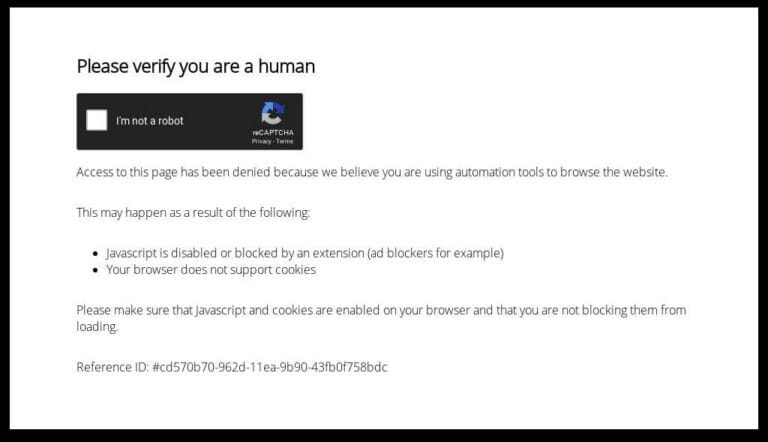Essential Website Maintenance Agreement Template for Your Business Needs
Keeping your website in top shape is crucial for any business. A website maintenance agreement template can help you set clear expectations and responsibilities between you and your maintenance provider. This ensures your site runs smoothly and stays secure, which is vital for retaining customers and making a good impression. Here’s a look at what to include in your agreement, why it matters, and how to avoid common pitfalls.
Key Takeaways
- Clearly define roles and responsibilities in your agreement.
- Regular updates and security checks are essential for website health.
- Tailor your agreement to fit your specific business needs.
- Avoid vague terms that can lead to misunderstandings.
- Regularly review and update your agreement as needed.
Understanding The Importance Of A Website Maintenance Agreement

So, you’re running a business and you’ve got a website. Great! But a website isn’t a ‘set it and forget it’ kind of thing. It needs regular care, and that’s where a website maintenance agreement comes in. Think of it like taking your car in for an oil change – you might not want to do it, but you need to do it to keep things running smoothly. A solid agreement makes sure everyone knows what’s expected, which can save a lot of headaches down the road. It’s about being proactive rather than reactive, and honestly, it’s just good business sense.
Defining Responsibilities
One of the biggest reasons to have a website maintenance agreement is to clearly define who’s responsible for what. Is your provider handling security updates? What about content changes? The agreement spells all of this out. Without it, you might assume your provider is taking care of something, and they might assume you are. This can lead to critical tasks falling through the cracks. A well-defined agreement ensures that both parties are on the same page, minimizing confusion and potential conflicts. It’s about setting expectations from the start.
Ensuring Website Reliability
Website reliability is crucial for optimal performance. Imagine your website going down right before a big product launch. Nightmare fuel, right? A maintenance agreement helps prevent this by outlining regular checks and updates. This includes things like monitoring uptime, fixing broken links, and ensuring your site is compatible with the latest browsers and devices. It’s about keeping your website in top shape so it’s always ready to serve your customers. Regular maintenance can also improve your site’s speed and performance, which is a big plus for user experience and SEO.
Preventing Disputes
Let’s face it: disagreements happen. But a website maintenance agreement can help prevent them or at least make them easier to resolve. By clearly outlining the scope of work, payment terms, and support hours, the agreement acts as a reference point if any issues arise. It’s a written record of what was agreed upon, which can be invaluable in resolving disputes fairly and efficiently. Think of it as a safety net – you hope you never need it, but you’re glad it’s there if things go south.
A website maintenance agreement is more than just a piece of paper; it’s a tool for building a strong, reliable online presence. It sets clear expectations, ensures website reliability, and helps prevent disputes, ultimately contributing to the success of your business.
Key Components Of A Website Maintenance Agreement Template

So, you’re thinking about getting a website maintenance agreement in place? Smart move! It’s like having a safety net for your online presence. Let’s break down what should be in it.
Service Scope and Expectations
This is where you spell out exactly what the maintenance provider will do. Be specific. Don’t just say “website updates.” Instead, list things like:
- Updating plugins and themes
- Performing regular backups
- Monitoring uptime and security
- Content updates (if included)
Think about how often these tasks will be done. Daily? Weekly? Monthly? Put it in writing. This section is all about setting clear expectations to avoid misunderstandings later.
Payment Terms and Conditions
Money talks, right? This section covers how much you’ll pay, when you’ll pay it, and what happens if you don’t pay on time. Include:
- The total cost of the maintenance plan
- Payment schedule (monthly, quarterly, annually)
- Accepted payment methods
- Late payment fees (if any)
- Renewal terms
It’s also a good idea to specify what happens if you want to cancel the agreement. Are there any penalties? How much notice do you need to give?
Support Hours and Availability
When can you reach out for help? Is it 24/7, or only during business hours? How quickly can you expect a response? This section should detail:
- The days and hours support is available
- The methods of contact (phone, email, chat)
- The expected response time for different types of issues
- Escalation procedures for urgent problems
Having this information upfront can save you a lot of frustration down the road. Imagine your website crashes on a Saturday night, and you can’t get anyone on the phone until Monday morning. Not ideal!
How To Customize Your Website Maintenance Agreement
So, you’ve got a website maintenance agreement template. Great! But it’s just a starting point. Now comes the fun part: making it actually work for your business. Think of it like tailoring a suit – it needs to fit you perfectly.
Identifying Your Business Needs
First things first, what does your business really need? Don’t just grab a template and assume it covers everything. Sit down and think about the specific services you offer, the types of websites you work on, and the common issues that pop up. For example, if you specialize in e-commerce sites, you’ll need to include clauses about payment gateway maintenance and security updates. If you mostly handle small business websites, maybe you can focus more on content updates and basic troubleshooting. Knowing your niche is key.
Tailoring Terms to Your Services
This is where you get into the nitty-gritty. Go through each section of the agreement and tweak it to match your services. Are you offering unlimited support, or is there a limit? What’s your response time for urgent issues? What happens if a client’s website gets hacked? Be specific. The more detail you include, the fewer misunderstandings you’ll have down the road.
Incorporating Client Feedback
Don’t be afraid to ask your clients for feedback on the agreement. After all, they’re the ones who will be signing it. Maybe they have concerns about certain clauses, or maybe they have suggestions for additional services. Listening to your clients shows that you’re willing to work with them and build a strong, trusting relationship. It can also help you identify potential problems with your agreement before they become major headaches.
Think of your website maintenance agreement as a living document. It’s not something you create once and then forget about. As your business evolves and your clients’ needs change, you’ll need to update your agreement to reflect those changes. Regular reviews and updates will help you stay ahead of the curve and avoid potential disputes.
Common Mistakes To Avoid In Website Maintenance Agreements
It’s easy to get excited about a new website maintenance agreement and rush through it, but that’s a recipe for disaster. Let’s look at some common pitfalls so you can avoid them.
Vague Language and Terms
One of the biggest mistakes is using vague language. Ambiguity leads to misunderstandings and disputes. For example, saying you’ll provide “regular updates” isn’t specific enough. What kind of updates? How often? Instead, spell out exactly what’s included, like “monthly security patches and plugin updates.”
Ignoring Update Schedules
Failing to define a clear update schedule is another common error. Without a schedule, things can easily fall through the cracks. A website needs consistent attention. Make sure your agreement specifies how often updates, backups, and security checks will occur. A website maintenance agreement should include a schedule.
Neglecting Security Measures
In today’s digital world, security is paramount. Overlooking security measures in your website maintenance agreement is a huge risk. Your agreement should explicitly state what security measures will be taken, such as:
- Regular malware scans
- Firewall configuration
- Security audits
- SSL certificate maintenance
Neglecting security can leave your website vulnerable to attacks, costing you time, money, and reputation. Make security a top priority in your agreement.
Best Practices For Implementing A Website Maintenance Agreement
Regular Review and Updates
It’s easy to set it and forget it, but don’t! Your website maintenance agreement should be a living document. Things change – your business evolves, technology advances, and client needs shift. Make it a habit to review the agreement at least once a year, or even quarterly, to make sure it still fits everyone involved. This keeps expectations clear and prevents misunderstandings down the road. Think of it as preventative care for your business relationships.
Clear Communication Channels
Set up easy ways for everyone to talk to each other. This means establishing preferred methods of contact (email, phone, project management software) and response times. If a client sends an urgent request, they need to know how quickly they can expect a reply. Similarly, you need to be able to reach your clients quickly if you spot a problem on their site. Good communication prevents small issues from turning into big headaches. Consider using a project management tool to track communication and progress.
Documenting Changes and Amendments
Always, always, always write down any changes to the original agreement. Verbal agreements are hard to remember and even harder to enforce. If you and your client decide to add a new service, change the payment terms, or adjust the support hours, create a formal amendment to the agreement. Both parties should sign and date the amendment to acknowledge their agreement. This creates a clear record of all changes and helps prevent disputes. Think of it as version control for your website maintenance agreement template.
Keeping detailed records of all maintenance activities, updates, and communications is super important. This documentation can be invaluable if any questions or disputes arise. It also helps you track the effectiveness of your maintenance efforts and identify areas for improvement.
Here’s a simple list of things to document:
- Dates and times of all maintenance activities
- Specific tasks performed (e.g., software updates, security scans)
- Any issues encountered and how they were resolved
- Communication with the client regarding maintenance activities
Legal Considerations For Your Website Maintenance Agreement
Governing Law and Jurisdiction
It’s important to specify which state or country’s laws will govern the agreement. This dictates how any legal disputes will be handled. You’ll want to choose a jurisdiction that makes sense for both you and your client, usually where one of you is based. This section avoids confusion if something goes wrong and you end up in court. It’s not fun to figure out which laws apply after a problem arises.
Liability Limitations
This part is all about limiting your risk. Basically, it sets a cap on the amount of damages one party can recover from the other. It’s common to see clauses that limit liability to the amount the client has paid you over a certain period, like the last few months.
Liability limitations are there to protect both parties. It’s not about shirking responsibility, but about setting reasonable expectations and preventing one party from being financially ruined by a minor issue.
Termination Clauses
How can the agreement be ended? What happens if someone wants to back out? Termination clauses spell this out. Usually, there’s a notice period required (like 30 days), and there might be specific reasons that allow for immediate termination (like a breach of contract). Make sure the circumstances are clearly defined to avoid future disagreements.
Here’s a quick list of things to consider for termination clauses:
- Notice period required
- Reasons for immediate termination
- What happens to data and materials upon termination
- Any penalties for early termination
Benefits Of Using A Professional Website Maintenance Service
Let’s be real, running a business is hard enough without having to worry about the nitty-gritty details of website upkeep. That’s where professional website maintenance services come in. They can seriously take a load off your plate and bring some serious advantages to your business. It’s not just about keeping your site online; it’s about making sure it’s working for you, not against you.
Expertise and Experience
One of the biggest perks is tapping into specialized knowledge. You’re getting a team that lives and breathes website maintenance. They know the ins and outs of different platforms, security protocols, and the latest trends. Instead of trying to figure it all out yourself (and potentially messing things up), you have pros handling it. They can spot potential problems before they become major headaches, and they know how to fix things quickly and efficiently. This expertise translates to a smoother, more reliable online presence for your business. For example, they can ensure your website remains up-to-date.
Time Savings for Your Business
Think about all the time you or your employees spend on website updates, troubleshooting errors, or dealing with security issues. Now imagine getting that time back. A professional maintenance service frees you up to focus on what you do best: running your business. It’s about working smarter, not harder. You can dedicate your resources to growth, innovation, and customer service, knowing that your website is in good hands.
Access to Advanced Tools and Technologies
Professional services often have access to tools and technologies that you might not be able to afford or justify purchasing on your own. This could include advanced security software, performance monitoring tools, and content delivery networks (CDNs). These tools help ensure your website is fast, secure, and always available to your customers. It’s like having a pit crew for your website, constantly fine-tuning and optimizing its performance.
Outsourcing website maintenance isn’t just about convenience; it’s a strategic move that can improve your website’s performance, security, and overall effectiveness. It allows you to focus on your core business while ensuring your online presence is always at its best.
Here’s a quick look at the potential cost savings:
| Task | DIY Cost (Time) | Professional Service Cost |
|---|---|---|
| Security Updates | 4 hours/month | Included in plan |
| Content Updates | 2 hours/month | Included in plan |
| Performance Monitoring | 3 hours/month | Included in plan |
| Total Estimated Time/Cost | 9 hours/month | Significantly Reduced |
Ultimately, using a professional website maintenance service is an investment in the long-term health and success of your online presence. It’s about peace of mind, knowing that your website is in capable hands, allowing you to focus on growing your business.
Wrapping It Up
In the end, having a solid website maintenance agreement is a smart move for any business. It keeps everything clear between you and your maintenance provider, so there are no surprises down the line. You want your website to run smoothly and look great, right? A good agreement helps make that happen. Plus, it sets expectations for both sides, which can save a lot of headaches later. So, take the time to create or review your agreement. It’s worth it for peace of mind and a well-functioning website.
Frequently Asked Questions
What is a Website Maintenance Agreement?
It’s a contract that explains what each party is responsible for regarding the upkeep of a website.
Why do I need a Website Maintenance Agreement?
It helps make sure your website runs well, sets clear expectations for services, and avoids misunderstandings.
When should I use a Website Maintenance Agreement?
You should use it whenever you are giving or getting ongoing support for a website.
How do I write a Website Maintenance Agreement?
You should clearly state what services will be provided, when they will happen, payment details, and who is responsible for what.
What are common mistakes to avoid in these agreements?
Avoid using unclear language, forgetting to schedule updates, and not including security measures.
What are the benefits of having a professional maintenance service?
They bring expertise, save you time, and give you access to better tools and technology.




